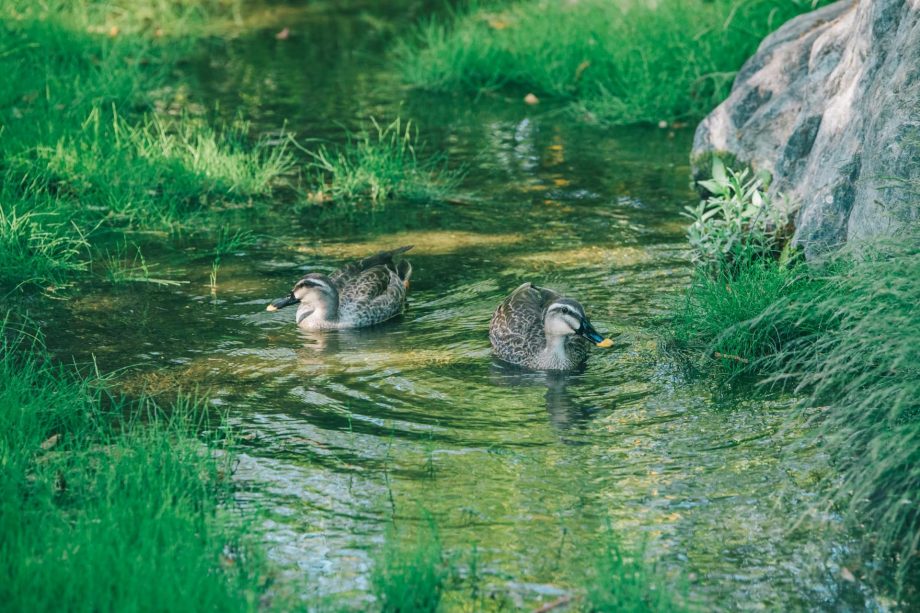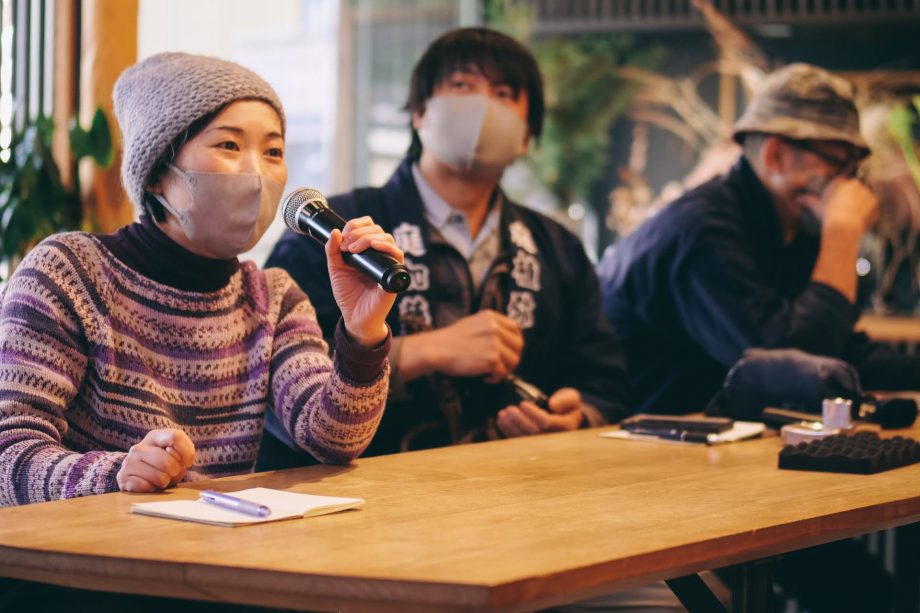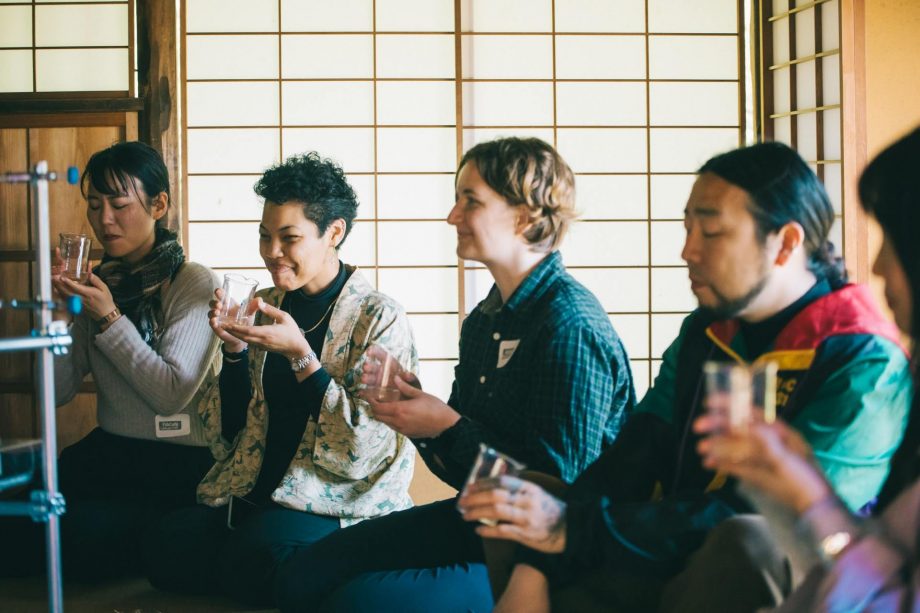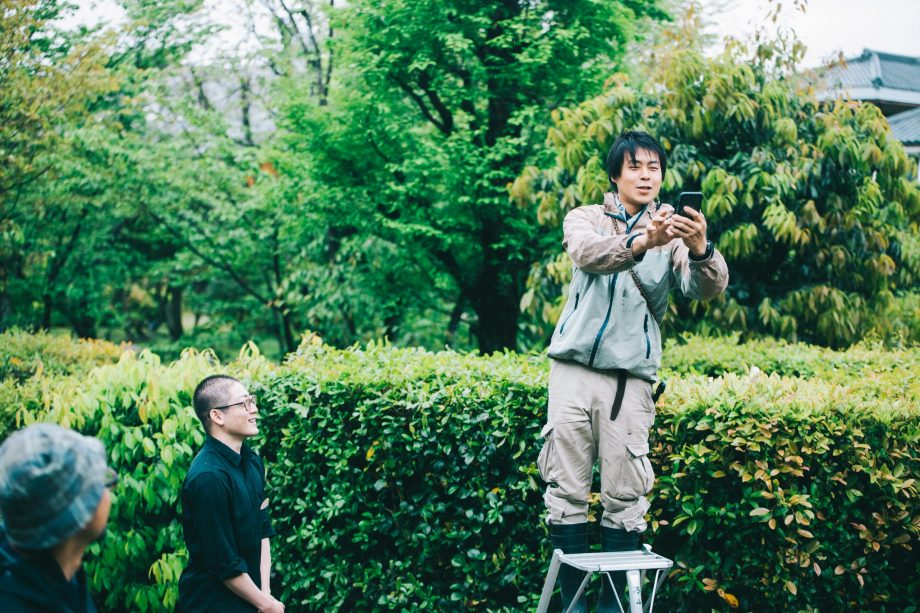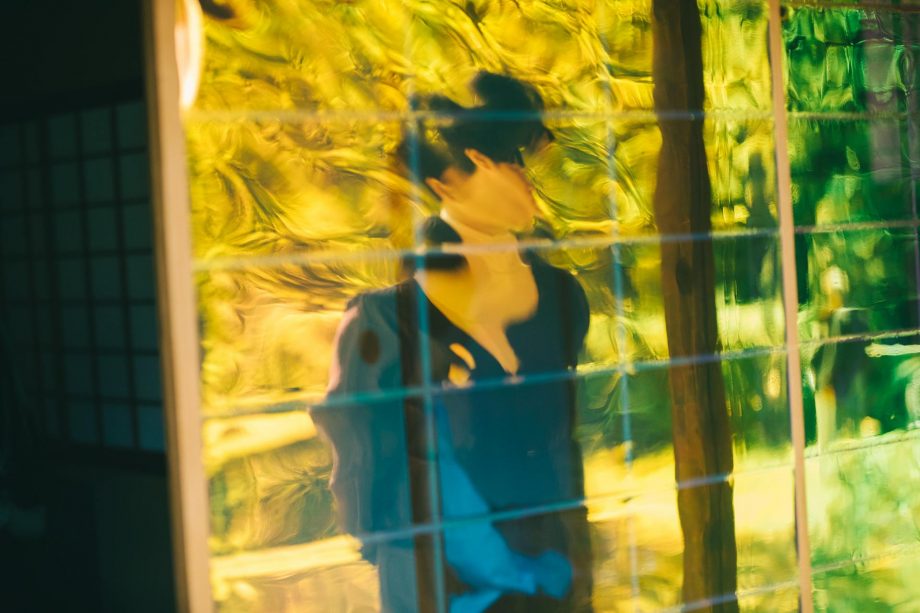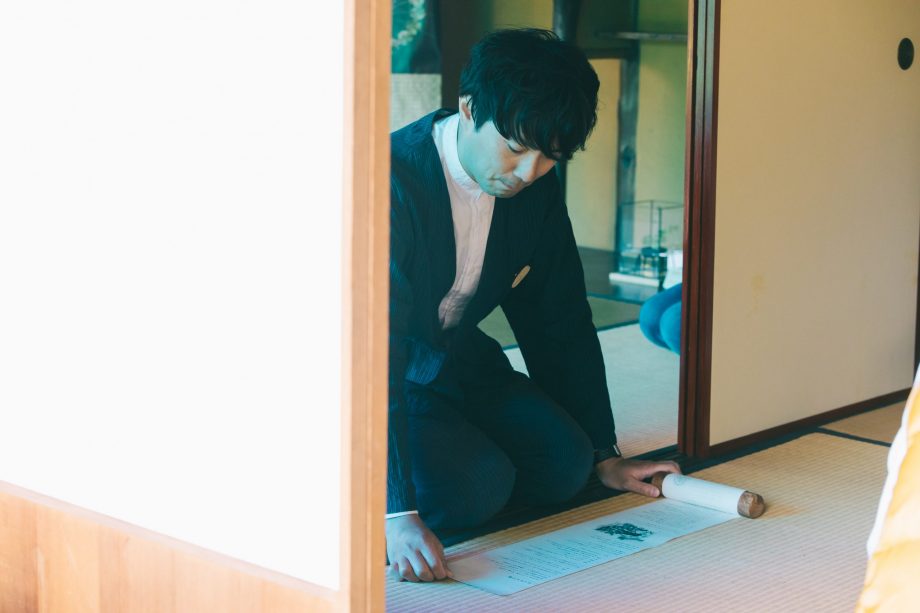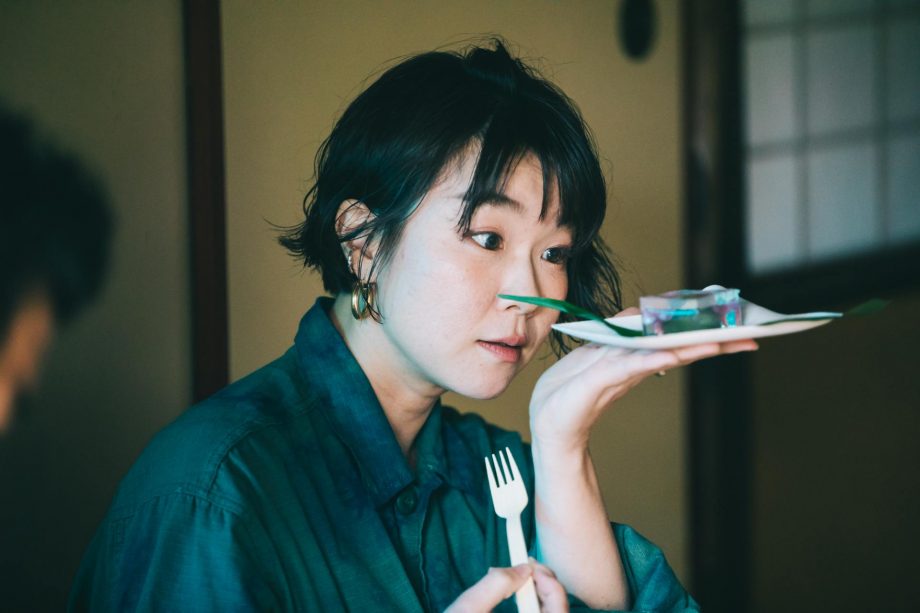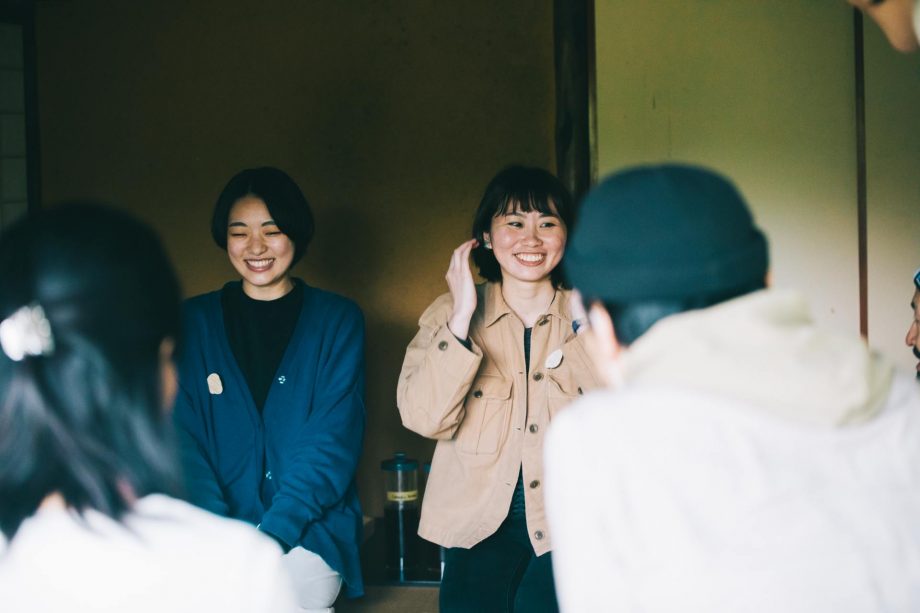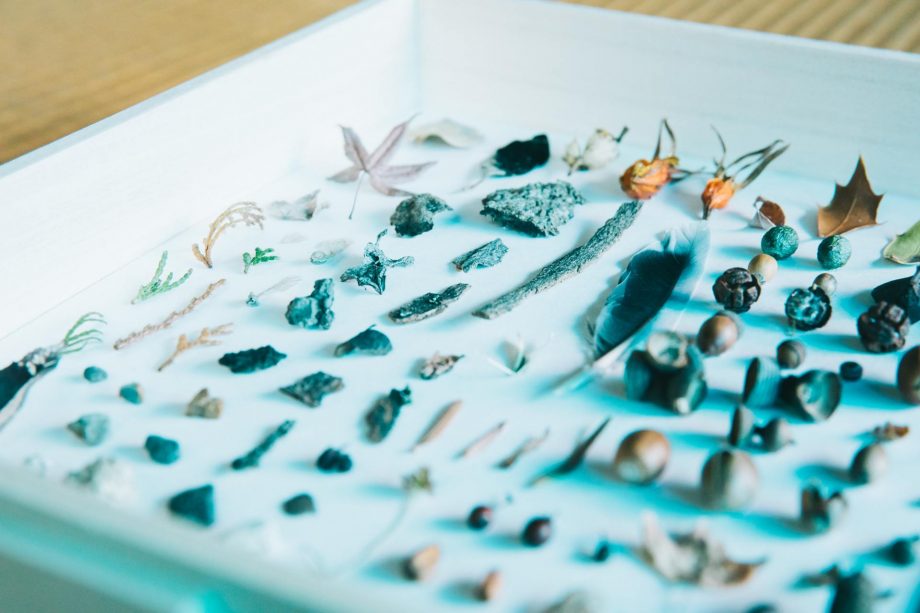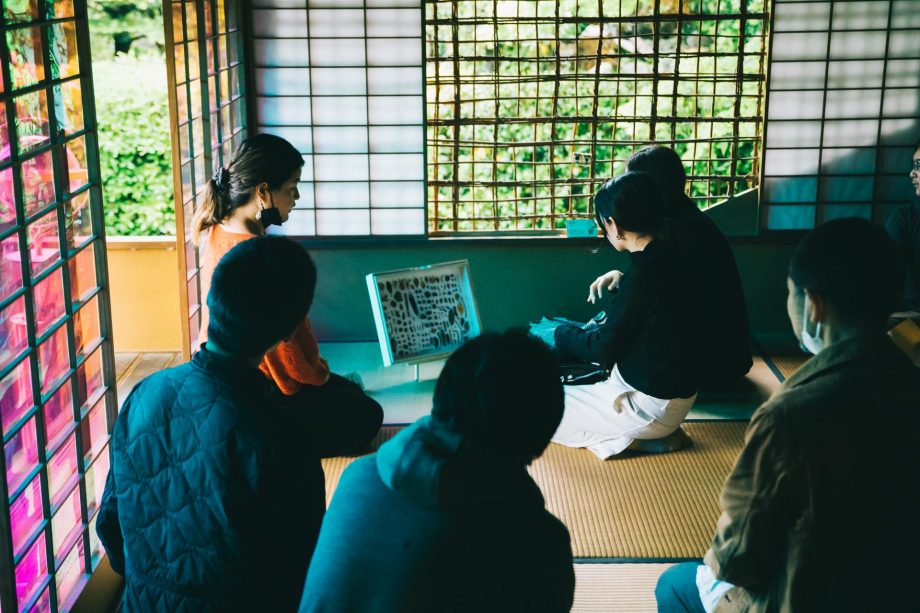Event report
June 15, 2023
FabCafe Global Editorial Team
One of these explorative activities included a workshop titled “Gardening the Wild” held over the course of 3 weeks in December 2022 to January 2023 in Sho-seien, a garden belonging to Higashi Honganji Temple. SPCS invited two gardeners from Ueyakato Landscape, a firm that has worked on some of Japan’s most famous gardens, to lecture in this workshop. The issue of biodiversity and sustainability is one that has to be tackled creatively. The workshop thus aimed to challenge our perception of beauty by exploring the relationship we have with non-human beings through the different lenses of both science and traditional technique. The work culminated in a tea ceremony held in Sho-seien’s Dairitsu-seki, showcasing 10 art pieces by the participants.
Biodiversity maintains the environmental balance all around us, yet the rate of species extinction has only accelerated since the 1970s. In just 30 years, 68% of all species have become extinct. Even now, 100 species or more are estimated to go extinct each day. Biodiversity is one of the most serious issues in the range of environmental problems, but restructuring the economic activities that affect it is no simple matter. Focusing solely on conservation also rarely changes human behaviour. How do we satisfy human needs while protecting our relationships with other organisms?
Our hypothesis to this is that “If we each re-examine our perception of beauty, our relationship with non-human organisms will be similarly renewed.” If we stick to theoretical arguments, the discussion often goes nowhere. Instead, if each individual can say “I find this beautiful, and this is why…” actions and thoughts can change at the individual level. In the process, we believe individuals will come to realise the importance of involving non-human beings. Through building such a virtuous cycle, we will experience the importance and responsibility of building a good relationship with a diverse variety of living beings.
SPCS thus organised this workshop where we experience the work of the gardeners to explore the sense of beauty we each inherently hold. We invited Yosuke Ota and Satoshi Washida of Ueyakato Landscape, the head gardeners managing Sho-seien, the enclave grounds of Higashi Honganji Temple, to lecture in this workshop. Their unique style of managing the garden supports biodiversity, and allows them to take real action for diversity, a tenet of Higashi Honganji’s Buddhist teachings.
-
Yosuke Ota
Ueyakato Landscape
In charge of the Shoseien Garden of Higashi Honganji Temple. While working to protect the biodiversity of Shoseien, he also engages in research and development of projects to improve the forests of Higashiyama, an essential part of Kyoto’s scenic beauty. He is attached to all living things, and is involved in Shoseien with an emphasis on viewing the garden from the perspective of living creatures. He has a principle of “tasting everything in the natural world”.
In charge of the Shoseien Garden of Higashi Honganji Temple. While working to protect the biodiversity of Shoseien, he also engages in research and development of projects to improve the forests of Higashiyama, an essential part of Kyoto’s scenic beauty. He is attached to all living things, and is involved in Shoseien with an emphasis on viewing the garden from the perspective of living creatures. He has a principle of “tasting everything in the natural world”.
-
Satoshi Washida
Ueyakato Landscape
In charge of the Shoseien Garden at Higashi Honganji Temple. Washida is a craftsman who was attracted by the charm of Japanese gardens as works of art that transcend reason, and is involved in the creation of gardens. With a background in contemporary art, he is dedicated to the daily care of Japanese gardens with the goal of creating a closer connection between Japanese gardens and art. Among landscape paintings, he especially enjoys the works of Edward Hopper.
In charge of the Shoseien Garden at Higashi Honganji Temple. Washida is a craftsman who was attracted by the charm of Japanese gardens as works of art that transcend reason, and is involved in the creation of gardens. With a background in contemporary art, he is dedicated to the daily care of Japanese gardens with the goal of creating a closer connection between Japanese gardens and art. Among landscape paintings, he especially enjoys the works of Edward Hopper.
-
Ueyakato Landscape
Established in 1848, Ueyakato Landscape is responsible for many of Kyoto’s most famous gardens, including Nanzenji Temple and Chishakuin Temple, and is the official garden management firm in charge of Higashi Honganji Temple and Shoseien Garden. In addition to managing and creating gardens using traditional techniques cultivated over many years, a diverse group of employees, including gardeners, have written numerous articles on garden research. The garden is an experimental field that serves as an intersection between nature and mankind.
Established in 1848, Ueyakato Landscape is responsible for many of Kyoto’s most famous gardens, including Nanzenji Temple and Chishakuin Temple, and is the official garden management firm in charge of Higashi Honganji Temple and Shoseien Garden. In addition to managing and creating gardens using traditional techniques cultivated over many years, a diverse group of employees, including gardeners, have written numerous articles on garden research. The garden is an experimental field that serves as an intersection between nature and mankind.

Gardeners are practitioners of Art and Science
A style of gardening that renews our sense of beauty and order
We spoke to Yosuke Ota, a gardener at Ueyakato Landscape, about the experimental garden management in Sho-seien and his daily trials and errors. His efforts to work on both ecological intervention and the renewal of human aesthetics should provide hints for all those who are thinking about building a new relationship between humans and nature.
>> Read the article here

If we were to summarise what Ota and Washida are doing it would be ‘proposing a new standard of beauty while maintaining a good balance between humans and non-human beings’. Instead of asserting that we have to protect nature, creating a new idea of beauty ensures that the biodiversity in the garden is protected because we think it is beautiful.
For example, when clearing fallen leaves in the moss garden, they constantly ask themselves ‘why is this beautiful?’ ‘Is this state causing stress to any organism?’ ‘If it is, is there another way to reduce that stress while still keeping it beautiful?’
On the 17th of December 2022, 14th and 28th of January 2023, 30 participants including designers, researchers, engineers, artists and many others from different walks of life, joined from both Japan and overseas. They experienced four different gardening activities in the famous Sho-seien. These gardening activities allowed them to directly influence the balance between ‘beauty’ and creating ‘an environment that nature can exist in reasonably’. Through the workshop, the participants experienced the conflicts and choices that Mr Ota and Mr Washida face every day.



Participants experienced four different ways of garden management under the guidance of Ota and Washida.
The first session in the workshop featured guest lecturer Professor Michio Kondo of Tohoku University, an ecologist and researcher studying how the ‘balance of nature’ is maintained. In 2020, Dr. Kondo published his research on how the evolution of the unnecessary supports biodiversity. * He explains the development of multiples species co-existing in complex systems despite natural competition as a result of the evolution of the unnecessary.
The evidence Dr. Kondo presented in the relationship between multi-species co-existing and the unnecessary, and the theory that ecologies do not only operate through ‘competition that leads to efficiency’ but also ‘biodiversity is sustained through the unnecessary’ gave important new insight to how we could approach the concept of beauty in biodiversity.
*The evolution of adaptive traits such as ornamentation and courtship behaviour in living organisms is described as unnecessary because, although advantageous for the individual, they cannot be expected to contribute to the overall rate of proliferation of the species.


Throughout the workshop, the participants were made to question ‘what is it they find beautiful? And what is a state that allows other organisms to be able to exist reasonably?’ And to express that to others, what form should these musings take? If it were to be displayed in Shoseien, what should be made? These ideas were presented in the final session where art mediator Michiko Haga provided critique.
10 participants out of the 30 continued on for the next 2 months to bring their ideas to life. Their works were then exhibited as part of the celebrations for the 850th anniversary of the birth of Shinran Shonin, the founder of Higashi Hong]
The exhibition was held in the Dairitsu-seki, a teahouse in Shoseien. Drawing from the comprehensive art form of the Japanese tea ceremony, the ‘Multispecies’ Tea Ceremony: One Cup of Tea and Ten Perspectives’, an experiential exhibit in which artist and viewer could interact was held on the 15th and 22nd of April.
Tea master Fukutaro Nakayama provided advice and direction for the experience design. He gave a lecture for the exhibitors as they prepared the exhibition and tea ceremony experience. With the input from Nakayama on the complex rules of the tea ceremony, and the intention behind each step of the journey to the tea ceremony, they were able to design an experience to convey their personal ideas to others through all five senses.

The ten completed works were installed in and around the tea house as a mechanism for appreciating Sho-seien from different angles. As for tea, which is an essential part of the tea ceremony, three different “tea” ceremonies were held: Chuuhicha (lit: insect secret tea), where moth larvae droppings are used as tea, Fungicha (fungus tea), where mushrooms were cultivated and brewed as tea, and coffee that went through four different fermentation processes. All members designed an experience where they could enjoy the familiar ecosystem from a different angle with their five senses and gain new insights, while incorporating the ultimate act of ingesting it into their bodies. To find out more about how it was on the day itself, please check out the article in the online magazine Ideas for Good.



An introduction to each of the ten works exhibited is included here. Each link will take you to detailed explanations by the artist themselves.
A QR code created by living moss. This work challenges how far we can connect to the digital world while leaving it to nature, which cannot be manipulated. At the time of the exhibition, the following URL could be read from this QR code, which also served as the waiting area of the tea ceremony.
More details:http://tea.prog-run.com/

-

-

Photo by Daisuke Murakami
Leaves fall even after sweeping and sweeping, and grass grows back even after pulling it out. This work was inspired by the choices and struggles faced by the gardeners in the face of an eternal task: why sweep the fallen leaves and pull the weeds?
More Details:https://bit.ly/3MKOt6o

Photo by Daisuke Murakami
This work attempts to reconstruct the relationship between nature and people using polarised light film to gain a new perspective on the beauty of nature. Installed as a fixture in the south-facing tea room, it changes the colour of the shadows in the room throughout the day. The work was exhibited as a way of appreciating the garden while capturing the movement of the sun in colour.
More details:https://bit.ly/41WAsqG

-

-

Photo by Daisuke Murakami
Shunsuke Hirose is a mushroom farmer in Tottori who also researches the fungi. This work is a device inspired by dream catchers, which make fungi visible by capturing them on tree logs and expressing them as mushrooms. Mushrooms generally do not appear in Japanese gardens, but as they play an important role in the ecosystem, he dares to highlight them as an object to be appreciated.
More details:https://bit.ly/3BKNahh

Photo by Daisuke Murakami
A story inspired by the fact that the symbol tree of Shoseien is a coniferous tree called Byakushin that is dead. The story was created as a ‘dreamscape piece’ in which the spirit of the symbol tree possesses the gardener and tells the story of his heart, and was recited by the gardener himself on the day of the tea ceremony. An experiment to apply Noh theatre and enter the B-side of the garden.
More details:https://hoshinotori.jp/project/nohsong-otozurenoki/

-

-

Photo by Daisuke Murakami
An attempt to visualise the ecological relationships in the plum tree garden in Shoseien as a way to visualise how organisms, inanimate objects and gardeners themselves influence each other. It was inspired by the food web diagram of Professor Michio Kondo of Tohoku University. The colours of the lines are changed according to the relationships that extinguish and enhance each other’s power.
More details:https://bit.ly/3MrsgsB


Photo by Daisuke Murakami
This work is about experiencing the plants in the garden directly with the sense of taste. The trees, plants and flowers, which are the main features of the garden, and the “space” between them, were expressed in the transparent kintamakan. The yokan with azalea blossoms inside was served as a tea sweet during the Coffee Tea Ceremony.

A planter designed to enhance the enjoyment of the world of regenerated vegetables (revo-veg). It was inspired by the standing dead symbolic tree of Shoseien, the Byakushin. The exhibition featured carrot hefts, which are usually cut off and thrown away.
More details:https://plantsdesign.jp/regrow-stand/

To express the diversity within the garden, natural objects removed by the gardener during the maintenance of the moss garden were collected and made into a specimen piece. The artist actually accompanied the gardener, Mr Washida, on his tending of the garden and collected nuts, insect shells and bird feathers one by one.
More details:https://bit.ly/3q5ixAP

-

-

Photo by Daisuke Murakami
This work consists of more than 70 wind catchers made of solar cells and buzzers installed in a pruned section of a Japanese blackberry planted in Shoseien. The lighting and ventilation of the branches and leaves, tended by the gardener, were converted into sound. The work was an organic way to appreciate digital sound through the fluctuations of wind and sunlight.
More details:https://bit.ly/422UBuW


Photo by Daisuke Murakami
-
FabCafe Global Editorial Team
This articles is edited by FabCafe Global.
Please feel free to share your thoughts and opinions on this article with us.
→ Contact usThis articles is edited by FabCafe Global.
Please feel free to share your thoughts and opinions on this article with us.
→ Contact us


